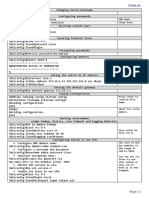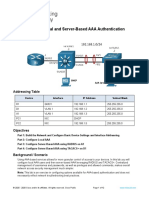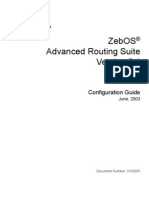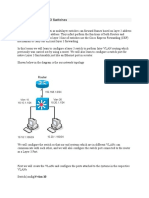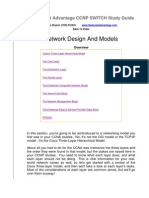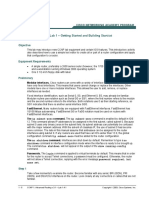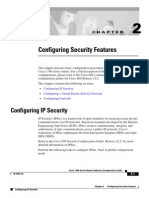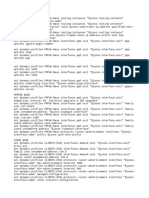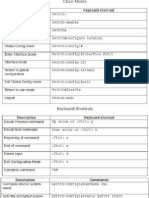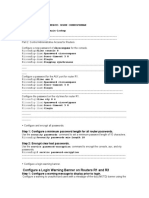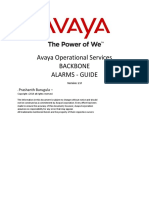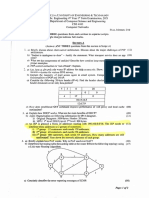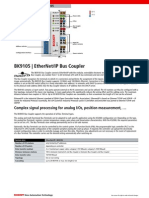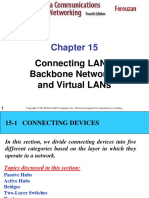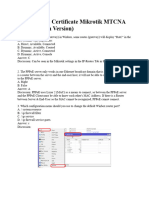100% found this document useful (2 votes)
639 views13 pagesCcna Lab Guide
This document provides instructions for basic configuration of a router and switch, including:
1. Configuring hostnames, enable passwords, login banners, console passwords, and IP addresses.
2. Configuring VLAN 1, telnet access, and default gateways for management.
3. Saving configurations to startup-config and verifying configurations.
It also provides step-by-step examples of configuring these settings on a switch named "DU" and a router named "BUET".
Uploaded by
Ahmed Mahmoud AhmedCopyright
© © All Rights Reserved
We take content rights seriously. If you suspect this is your content, claim it here.
Available Formats
Download as PDF, TXT or read online on Scribd
100% found this document useful (2 votes)
639 views13 pagesCcna Lab Guide
This document provides instructions for basic configuration of a router and switch, including:
1. Configuring hostnames, enable passwords, login banners, console passwords, and IP addresses.
2. Configuring VLAN 1, telnet access, and default gateways for management.
3. Saving configurations to startup-config and verifying configurations.
It also provides step-by-step examples of configuring these settings on a switch named "DU" and a router named "BUET".
Uploaded by
Ahmed Mahmoud AhmedCopyright
© © All Rights Reserved
We take content rights seriously. If you suspect this is your content, claim it here.
Available Formats
Download as PDF, TXT or read online on Scribd
/ 13
